[To all new readers: the following is the sort of long, laborious, but utterly unsystematic analysis that sometimes happens when I get all excited and some of you clearly find this all very boring and incomprehensible and some of you seem to enjoy it. So there.]
Why, oh why, was I so mean to Tchaikovsky? I must examine my own motivations: I’ve been a bit overworked lately? I missed San Francisco like some sort of windy Xanadu? … Whatever the reason, I apparently needed to trash Tchaikovsky in order to make delicious love to Brahms, which is unfair to both (and undesirable to at least one). I could have so easily detoured around the snark and taken a leisurely drive in lands of tender admiration.
And yet the snark signifies? There is a certain eagerness-to-please in Tchaikovsky … a lurking “look at me!” This is, perhaps, why I find myself glowering at him like a teacher’s pet, withholding the praise he richly deserves. It is not the “look at me” of a confident narcissist, of Strauss for instance; it is more desperate. Occasionally you see this desperation straight in the face, unconcealed, unsublimated (i.e. undeveloped, not subjected to typical musical rigor), and it makes you want to cry, the naked neediness, and then Tchaikovsky is truly, utterly lovable. Also, when Tchaikovsky is dreaming or dancing, and not trying to solve or surmount life’s problems: I love him then too.
Anyway.
What I really wanted to convey was the quality of the Brahms Motive. Its haunting, lifting recurrence. Its message-carrying allure. (A carrier pigeon of promise and loss.) And I want to talk more about all the meaning and feeling that gets swept up in that, in the dance of the Motive through the piece.
I misprinted the Motive hideously in the last post; it is not JUST a dotted rhythm; it is a dotted rhythm with a little hiccup, like so …

… and to omit the little rest in the middle is like taking the gills out of a fish and throwing it back and saying “swim.” The rest is the breath of the idea, its life force. (And the idea is the piece’s life force.) The silence acts as a hinge: with one act, it holds the idea back and then impels it forward. The quickstep of the last two notes is a response to the stoppage of the first—a continuation, not merely of sound, but of sound “against silence.” Breath is framed between notes; the notes hold the breath in between them like the skin of a bubble, like our skin holds us in.
We have a story in three phases (in three movements) … and the dotted motive, with its bubbled breath, is the code, thread, cipher connecting them. Like the key to a code, it matches one thing to another; it says: this is the same as that. (A musical equal sign.) It attaches personhood, or at least identity, to moments of music, and drags this personhood around, reluctantly, from place to place … (repetition in music is so much more than repetition).
Phase one of this story, the first movement, is to my mind simply good times. What could be more of a good time than the opening of Brahms G major Violin Sonata? The pianist is a gentle giant down there in the low register, with pillowy, gorgeously voiced fundamental chords: pure triadic happiness, over which the lighter breath of the violin skirts and curves. Brahms’ picture of happiness is musical, of course (happiness for a composer is good voicing)—something close to the ideal of accompaniment and melody. Such “ideal textures” abound in the first movement—for instance, the second theme also—and evoke a bubble of youthful, uncomplicated pleasure.
The dotted rhythm, in the first movement, is essential to—the code for—this pleasure. I hear it in the first movement as a seedling for a waltz (dance of pleasure). It lends the second theme a tentative waltzishness …

and then returns in a totally “out of the closet” waltz:

Brahms displays such a combination of simplicity and ingenuity with the dotted rhythm, such a faith in it … he allows it to be fruitful and multiply. First we have single dotted rhythms:

Then a lovely hemiola (Brahms just can’t help himself!), a chain of three dotted rhythms:

Then an incredible profusion, dotted rhythms “gone wild,” letting loose at Spring Break (the piece was written in the springtime of 1879, let us not forget!):

Bounding, unstoppable… as if drunk on dottedness … the rhythm, which is “properly” kind of a halting, stopping force, becomes a flowing river, an obsession: a connective, collective rhythmic joy. The world of the first movement owes itself largely to this free-floating dotted rhythm, which gets caught up continually in a sort of Brahmsian 3-step, a simplicity-involvement-extrication process: he alludes to the waltz, or simply to the dance (step 1), which then gets snared in more complicated compositional webs (step 2), which then inevitably breaks out to dance and sing again (step 3).
The Motive, in its basic form, it is all on the same pitch. That is, it is somewhat neutral to the question of pitch; it adapts itself to circumstances. But it is not neutral about rhythm; it takes on, by choice, at its core, one of the fundamental dialectics of music (especially German Music): the question of upbeat/downbeat. The Motive has a kind of impelling self-direction towards the last of its notes, which “seems to be” the beat. It is a perpetual upbeat, perpetually implying an elusive downbeat. This is part of what the “code” is about.
Recipe, perhaps, for a dull code. In much German Music, the upbeat/downbeat hierarchy can become tiresome, heavy, undesirably fraught: an eternal, marching, everything-goes-to-this-ness. Yes, es muss sein. Once upbeats become the beat, they die a little rhythmic death; downbeats are the corpses of living upbeats … (The grave is the last downbeat of our lives, in a manner of speaking.) Many pieces—and performances—die horrible deaths from too many downbeats. But Brahms is aware of this issue; his code is constantly shifting; the last note of the dotted rhythm is met by a million little accidents, which lighten or rub against the grain of the natural tendency, the natural implication … which make the downbeats feel less “down,” less of a necessity.
In the first movement the dotted motive mostly runs with the poetic flow, conforming to its “proper” upbeat role … the dotted rhythm leads, it lifts; it comes at beginnings … it is a balloon lifting the phrase off the ground … that is, its place in the PHRASE corresponds metaphorically to its relation to the BEAT. It is almost always a prefix: an inhale, an invocation of a musical sentence to come.
But in the second movement, phase two of our story, the dotted motive does the opposite … It is almost always the suffix of the phrase, the Last Word. It closes things, weighs them down (whereas in the first movement it was so lifting, and lifted). Watch, each phrase in turn ends with a dotted rhythm:
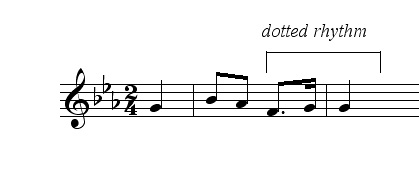
and the whole movement ends with dotted rhythms…
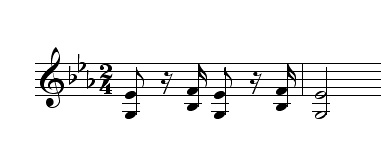
And in the contrasting section of the second movement, the dotted rhythm becomes a funeral march:

… which is just about as weighty and closing a genre as you can summon up (downbeat as death, indeed).
Let’s revisit the idea of the motive as a cipher, a secret code. The dotted idea keeps reappearing, it is patterned, it suggests some recurrent meaning which can be de-ciphered. But its constancy is played against serious semantic uncertainty. In the first movement, the dotted rhythm codes “waltz” and “swing” and “lilt,” perhaps … Whereas in the second movement it codes “final” and “cadence,” and “march” and “trudge” and even “death,” if you want to get dramatic about it. The motive encodes radically different things, though it is always (infuriatingly, wonderfully) the same. Unbending selfness of the motive, endless variety of implication: immovable object, irresistible force.
In both movements I think the dotted rhythm feels “impelled” or “impelling.” In the first it impels us to enthusiasm, to further circles, to invention and dance. In the second it impels us to the cadence, to the tonic and down the line, to the march (fate) …
Here is, I think, Brahms’ master stroke: in the last movement the motive takes on a third guise. This guise is enigmatic, unreadable—though pervasive, evasive. We hear the Motive everywhere; the pianist, particularly, cannot seem to stop saying the Motive over and over again, obsessively, the left hand leaping over the right in order to reiterate it at different octaves:

It is here we learn that the Motive is a haunting, magical seed, which ends up, as the story unfolds, growing backwards into the past, blossoming in reverse. (The piece is written to impel us backwards, it is a time machine.) In fact it’s like a detective story—aha!, the last movement did it!—this material, the melancholic theme of the last movement, is where the Motive “came from.” Retrospective understanding. For Brahms formed this Sonata, clearly, from the Song “Regenlied,” which begins (no surprise!) with the dotted idea, with our Motive:
Yes, it dawns on you … the whole Sonata arises from the last movement, which arises from the song, which springs from the dotted rhythm, which arises from the poem (a chain of derivations without end) …
I have heard some people call the third movement a “problem movement.” But it’s here, precisely, at the end, that we probe to the source, the “why” of the motive, and of the whole piece. And here, particularly at the source, the motive is reluctant to describe itself, to pin down its own meaning. This magnificent reluctance, this secretiveness, is the so-called problem; and indeed if you don’t like enigmas or cracks between meanings, this movement could be a problem for you. But then you shouldn’t listen to it.
Because it is here that Brahms paints a whole new matrix of possible meanings of his dotted breath. There is the dominant pedal in the piano, the eternal sad call and response of the D’s over the raindrops (going nowhere, can’t think of any escape), and then there is the ecstatic reworking of the slow movement theme with excited dotted rhythms (surging somewhere joyfully), and then there is heaven as an unbroken chain of dotted rhythms (again going nowhere, why leave when things are so good?) …
And finally, because heaven is simply boring, or unsustainable, there is this last yearning sequence of dotted rhythms going up by fourth…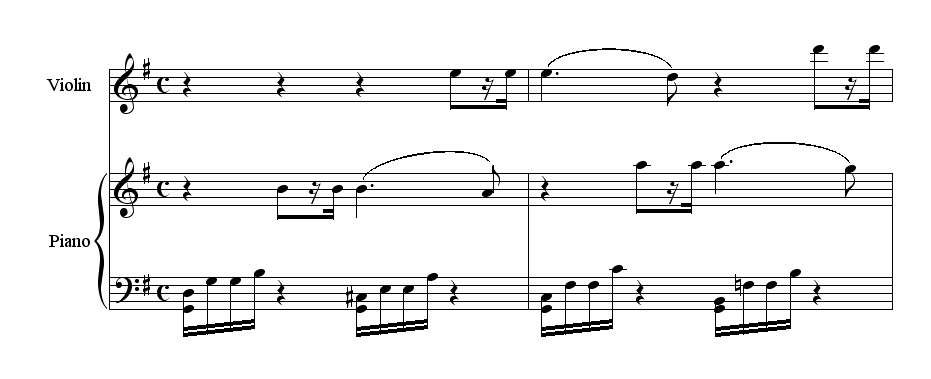
Where this is going, we won’t return from. If you have not spilled over into tears by this point, you are heartless—here, where Brahms (at last) shows his hand. Here, perhaps, the dotted rhythm becomes faintly Schumannesque (another code, another vanishing autobiographical meaning?): new harmonic leanings, new tenderness. Contagious tenderness passing from piano to violin.
In Mahler’s 9th and Schubert’s Winterreise, to take two extraordinary instances, we have nostalgic works which begin from “game over,” from a condition of preexisting loss, where everything—happiness, life, dreams, hope—has already evaporated from measure one, and we merely count our disintegrating losses. But most composers of nostalgic pieces take the more traditional route: they create worlds of happiness in order to destroy them. This seems, perhaps, mean-spirited? But then the third, unpredictable step is applied, a door is opened onto neither happiness nor despair. An emotional note is sounded on a foreign clef, undermining and questioning the whole previous vocabulary and proposing a more meaningful, but even more evanescent understanding, which perches like a bird on the last note of the piece and flies away never to be heard again. In other words: the place where you arrive at the end of Brahms G Major Violin Sonata cannot be summoned to mind or soul “on demand.” It cannot be remembered. It is perishable, even as an idea. It is the precarious, extraordinary result of all the conflicting codes and messages of all the preceding notes, the message hiding behind the Motive which only tells you, at that moment, what it might have been. Someone is there working through the night for you, deciphering this code, your code, understanding your whole life, and they pass a final translation to you on a piece of paper which …

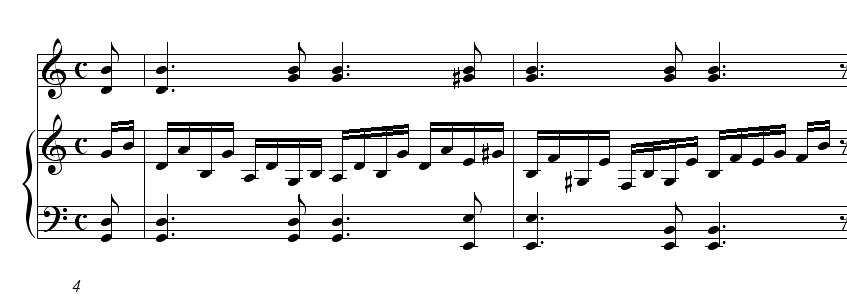

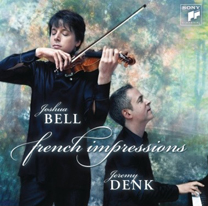
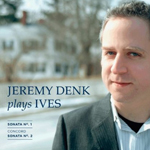
4 Comments
Dr. Denk,
About that coda to the finale of Op. 78: you rightly suggested that it is Schumannesque. Are you willing to go a step further and acknowledge what has always seemed to me the great probability that it is a quote from the first of Schumann’s Davidsbündlertänze? That Brahms brought together in this moment a song of his, a piano piece by his mentor, and a motive originating with his great muse Clara just seems far too good not to be true. This suggestion has been met with skepticism when I’ve made it in the past, but I’m curious to know what you think.
J’ DMA ’87
Thanks for the ad-hoc music education. i actually got myself a copy of the score and now i’m reading the score while listening to the kogan recording, which has sortof become my favourite.
Tchaikovsky-hater.
I am one of the new readers who would fall into some sub-category beneath the “seems to enjoy it” heading. Having next to no formal musical training, it was certainly a stretch to intellectually comprehend the technical aspects of this post, which I managed to process to my satisfaction with a sort of “emotional sonar” rather than intellect.
It isn’t possible to send feedback to Rachmaninoff, or Myra Hess, e.e. cummings or Victor Hugo after listening to a recorded performance or reading a written composition; (so, thanks to Al Gore inventing the internet), I can now give
feedback, and I am so pleased to be able to express my deep appreciation for your work.
You writing inspires in me the same soul-resonance as your performing. It satisfies in me what I can only describe as an ever present homesickness, which I am certain finds its source in that evolutionary force, that mitochondrial demand to know oneself. After I read this posting for about the sixth time, particularly the part following the “third unpredictable step”, I took a deep breath, wiped away the tears and I am just so certain I caught a glimpse of a leprechaun…
2 Trackbacks
[…] Denk continues his Thought Experiment about Brahms G major violin sonata. This is a piece Miss Mussel knows very well and its nice to be […]
[…] Brahms could have done to a motive like this, and I’m reminded of Jeremy Denk’s post(s) on Brahms and motives (and Tchaikovsky). And since the Fauré is kind of modal, I’m even more […]